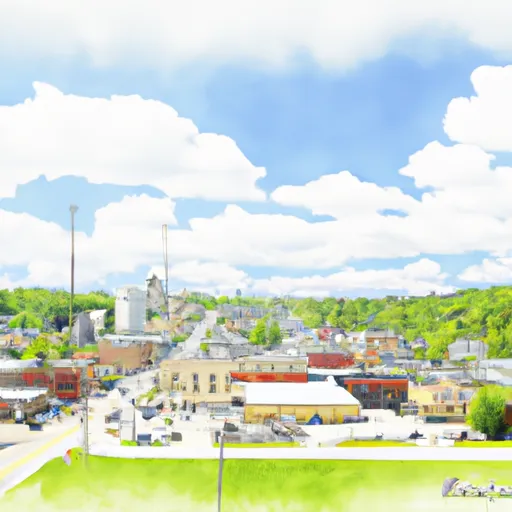°F
°F
mph
Windspeed
%
Humidity











Wauzeka is a small village located in Crawford County, Wisconsin. It experiences a humid continental climate, characterized by warm summers and cold winters. The average temperature in summer ranges from 70°F to 80°F, while winter temperatures can drop to 10°F to 20°F. The area receives an average annual precipitation of around 34 inches, with rainfall distributed evenly throughout the year.
Wauzeka is home to the Kickapoo River, which offers various hydrological constituents. The river provides opportunities for fishing, canoeing, and kayaking, allowing visitors to explore its scenic beauty and abundant wildlife. The river also supports diverse aquatic life, including smallmouth bass, northern pike, and catfish.
Outdoor enthusiasts can indulge in numerous recreational activities in Wauzeka. The surrounding area is known for its picturesque landscapes, making it ideal for hiking, birdwatching, and wildlife photography. Nearby state parks, such as Wyalusing State Park and Wildcat Mountain State Park, offer additional opportunities for camping, picnicking, and nature trails.
Overall, Wauzeka, Wisconsin, combines its favorable climate, hydrological features, and outdoor recreation options to provide visitors and residents with a charming and nature-filled experience.
Weather Forecast
Wauzeka receives approximately 873mm of rain per year, with humidity levels near 80% and air temperatures averaging around 9°C. Wauzeka has a plant hardyness factor of 5, meaning plants and agriculture in this region thrive during a short period during spring and early summer. Most plants will die off during the colder winter months.
Regional Streamflow Levels
577
Cubic Feet Per Second
61
Cubic Feet Per Second
181
Cubic Feet Per Second
10
Cubic Feet Per Second
Nearby Camping
| Camping Area | Reservations | Toilets | Showers |
|---|---|---|---|
| Rocky Springs - Natchez Trace Pkwy | |||
| Great River Road State Park | |||
| Lamar Dixon Expo RV Center | |||
| Leroy Percy State Park | |||
| Clear Spgs Rec Area | |||
| Little Sunflower River |



